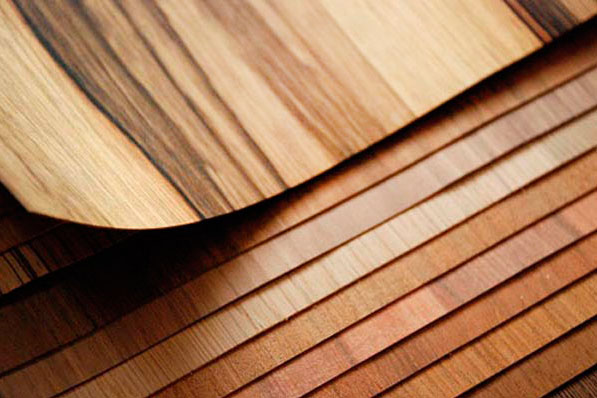Natural veneer and its specifications

The finishing material created from wood in thin sheets is called veneer. It is actively used for finishing door panels and a number of other elements. The very idea of creating thin sheets of wood originated in ancient Egypt, where wood was always in acute shortage, and its price correlated with the value of jewelry. It is natural that the veneer was invented precisely where there were no dense forests and the wood needed to be used economically. Cutting the veneer with a cross-saw was a complex and time-consuming task. However, the products from the tomb of Tutankhamun clearly demonstrate that even with the simplest methods of processing that existed at that time, people were able to show the beauty of wood to the full. And in the future, the same trend, but expressed in a different style, could be seen in the furniture of the Renaissance and Baroque periods, and further, in subsequent periods, even becoming distinctive signs of certain times.
Looking at the interiors of castles, you can see the doors made of natural veneer, preserved from past eras. Furniture and many other elements delight the eye with fine elaboration. And modern craftsmen are still developing this ancient direction, using already modern equipment.
Since ancient times, veneer was created manually, and only by the 19th century it was possible to mechanize the process of its production. A patent for a machine with a manual drive, and allowing you to plan wood, was obtained by Mark Brunel in 1806, in England. In the same country, by 1818, Faverer created a peeling machine, which made it possible to produce veneer.
The first factory that produces this material was established in Germany in 1843, and at that time they worked there on the most ordinary saws. However, the creation of this material became a separate profession even then – after all, almost all stages of work required professionalism and appropriate knowledge. So, even the choice of the original wood when creating veneer requires attention, and professionalism was required already at this stage, not to mention the stages of processing.
Veneer can be classified according to the technology of creation, highlighting the following options:
- Planed, which is created on planing machines from bars,
- Shelled – created from short logs on shelling equipment,
- Sawn-it is made on plywood sawing machines or frames for sawing wood.
This material is most widely used in the creation of doors and furniture. There are several types of veneer, and different elements of products usually require the use of different types of this material.
Veneer in the modern sense is a thin sheet of wood, usually a valuable breed, which can be obtained by peeling or planing. Peeled veneers can be used to create plywood, laminated wood material. Sawn veneer is considered the highest quality, and it is often used in the creation of musical instruments, in particular.
Planed veneer is created from valuable wood with an elegant texture, they are veneered furniture, for example. There are several varieties of such, from radial to tangent, and as for the rocks – the most familiar solution is oak, which is relevant for expensive furniture, doors.
Veneer has its own list of advantages, and in particular, it is a traditional material that is famous for its variety of shades and textures, is subject to repair and restoration if necessary, and allows you to create complex products in shape. It also has disadvantages: for example, prices for veneer are growing due to a decrease in the number of natural opportunities for wood extraction, and this natural material does not differ in the consistency of color, properties and texture. The latter factor forces the manufacturer to put a lot of effort to maintain the consistency of the material, even within a single common batch, and here it can be seen that the darker the color and the smaller the batch, the easier it is to maintain the commonality. There are also problems with covering curved surfaces with this material, and in addition, it should be noted that over time, the veneer can burn out under the sun. In addition, the creation of this material requires significant human resources and material investments, which affects the cost of the finished material. Veneer requires both humidification of the premises, and control over its condition, and even periodic restoration work.
But be that as it may, it is the veneer that makes it possible to convey the natural pattern that only natural materials possess, and which even the most modern technological solutions cannot reproduce.
Pub date: 2021.05.31